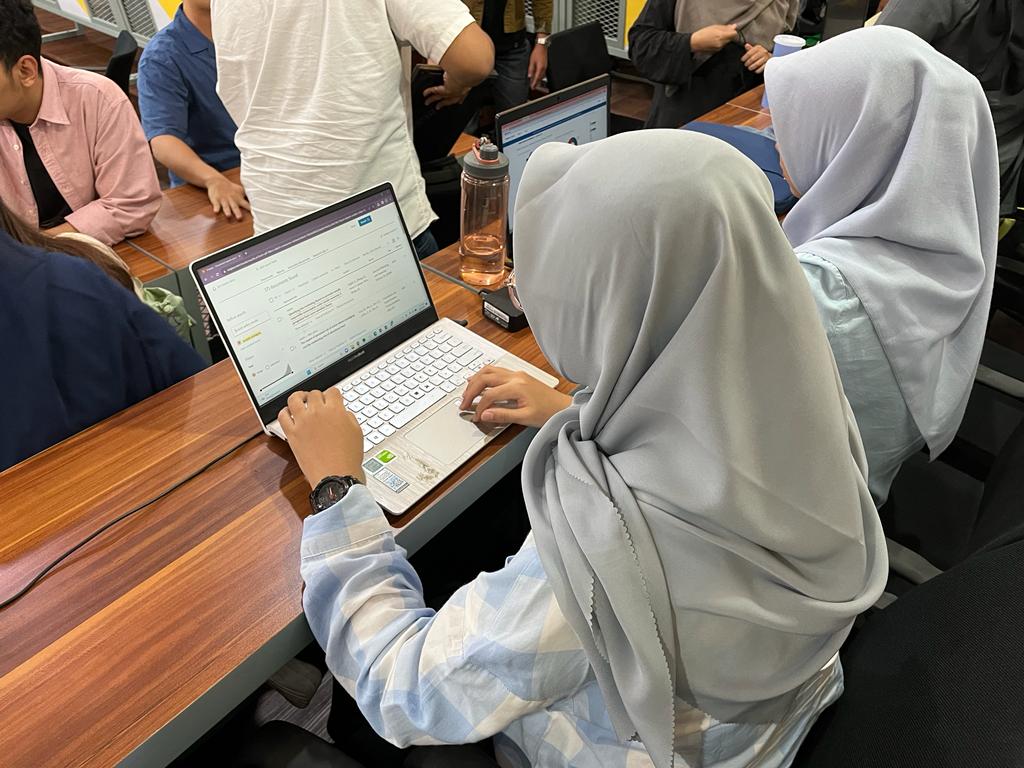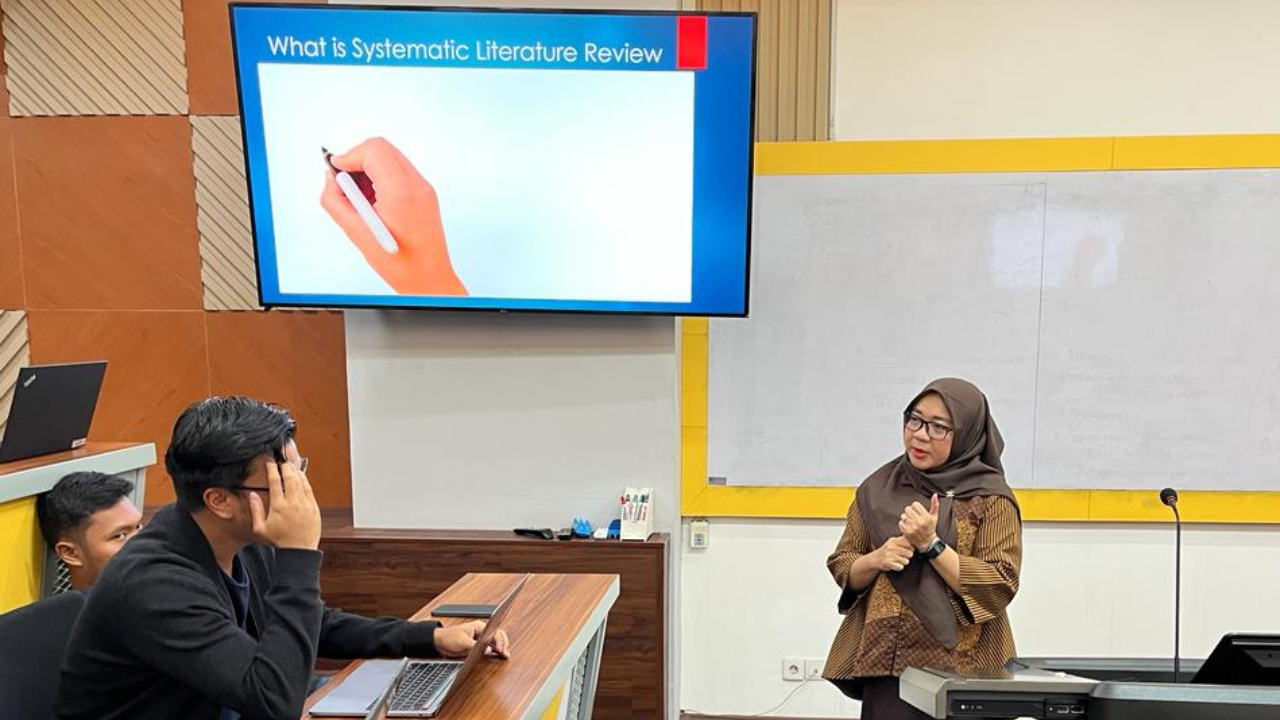Ideas and research questions are the most critical part of writing a thesis. A robust literature review of previous research–including the subject, problem, and methodology–can help sharpen the ideas and questions to be answered in the thesis.
Eka Yuliana, an entrepreneur and lecturer at Telkom University, shared the role of literature review in the thesis in a guest lecture on Research Methodology for Business for third-semester students of Young Professional MBA Batch 68 in Bandung (22/9).
“I want you guys to get ideas after this session. “I want you to find your passion in the thesis you will write later,” said Eka in the guest lecture.
Eka highlighted two types of research in writing a thesis: primary and secondary. Primary research collects data directly from research subjects, while secondary research collects information from previous research. The literature review is part of secondary research.
This secondary research method involves collecting data for a specific purpose, classifying data, and interpreting data. This method uses explicit methods to identify and synthesize relevant studies that MBA students can use when writing their theses.
Not only does it generate ideas, but literature reviews also help students to define problems or problem definitions.
“You can only find research questions if you have defined the problem you want to discuss. “Find the phenomena and problems you want to observe; you don’t need to think about solutions [first],” said Eka.
Research questions drawn from the problem definition are often written as hypotheses. According to Eka, a hypothesis is a “presumption based on incomplete data” that needs to be further proven through research results.
With a systematic literature review, the hypothesis will have a better connection with the basics of science to guide the research direction.
Meanwhile, in a research report, according to Eka, there are four main sections, namely introduction, methodology, results, and discussion. Systematic literature reviews exist in all aspects of research reports.
A systematic literature review is included in the introduction as background to explain the urgency of the research. In addition, systematic literature reviews help researchers determine the best methods for collecting and interpreting data. Finally, a systematic literature review deepens the discussion by adding comparisons to other similar studies and existing theories.
Eka ended the guest lecture using the ProQuest Platform to create a systematic literature review. The key to making this process easier is to filter the available journals and papers based on their relevance. In ProQuest, the entire SBM ITB academic community can access and filter papers based on topic, publication time, research area, keywords, and journal title.
Nadiya Rahmawati, a Young Professional MBA Batch 68 student, admired the systematic literature review method.
“This method will be beneficial in building the content of my thesis and strengthening my scientific foundation,” She concluded.





